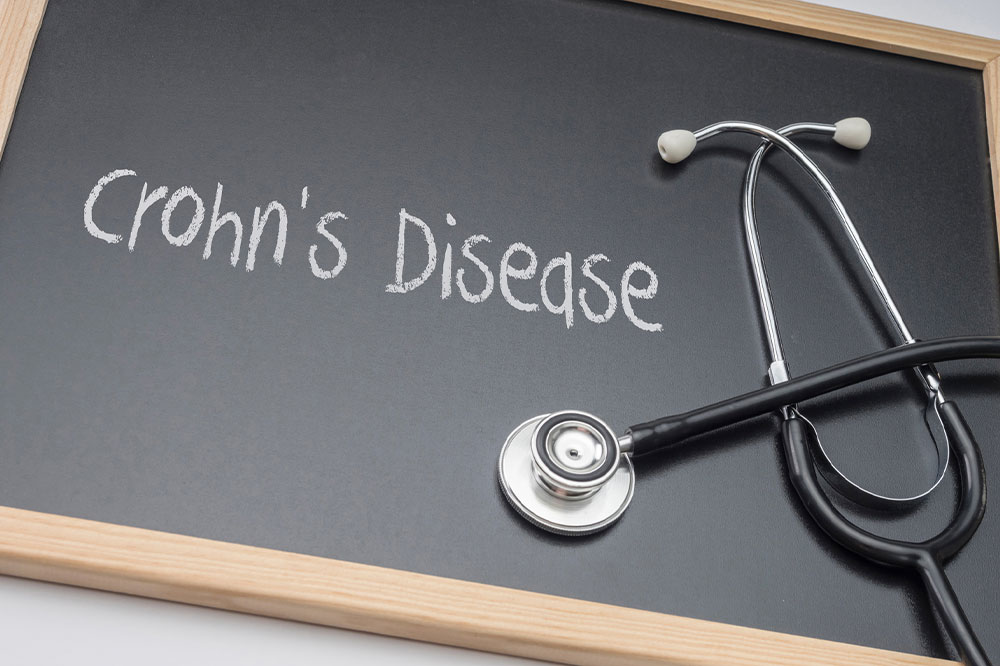In-Depth Insight into Crohn's Disease: Causes, Symptoms, and Management Strategies
Discover a comprehensive overview of Crohn's disease, including its causes, symptoms, risk factors, and modern treatment strategies. Learn how early diagnosis and effective management enable many patients to lead active lives despite this lifelong condition. Gain insights into current medical approaches and lifestyle modifications to improve quality of life and prevent complications.

In-Depth Insight into Crohn's Disease: Causes, Symptoms, and Management Strategies
Each year, thousands of individuals around the world receive a diagnosis of Crohn’s disease, a complex chronic inflammatory condition that primarily affects the gastrointestinal (GI) tract. This disease can significantly impact daily life, leading to discomfort, nutritional deficiencies, and potential complications if not diagnosed promptly and managed effectively. Understanding Crohn’s disease, recognizing its symptoms early, and exploring current treatment options are essential steps toward maintaining health and quality of life.
What Exactly Is Crohn’s Disease? Crohn’s disease is classified under a broader category known as inflammatory bowel diseases (IBD). Unlike simple digestive upset, Crohn’s involves a persistent inflammatory process that can occur anywhere along the digestive tract, from the mouth to the anus. It is characterized by inflammation that penetrates through multiple layers of the intestinal wall, making it more severe and complicated than typical gastrointestinal discomforts.
The primary issue in Crohn’s is an abnormal immune response, leading the body to attack parts of its own digestive system. This results in swelling, ulceration, and tissue damage. Over time, these inflammatory changes can cause partial or complete blockages, fistulas, fissures, and other serious complications, severely impairing digestion and nutrient absorption.
The root causes of Crohn’s disease are multifaceted and still under extensive research. While no single factor has been definitively identified, current evidence suggests a combination of genetic predisposition, immune system dysregulation, environmental influences, and lifestyle factors contribute to its development. People with a family history of the disease are at higher risk, but environmental triggers such as diet, smoking, and stress can also play significant roles.
Who Is Most at Risk? Crohn’s disease can appear at any age, though it most frequently strikes between the ages of 15 and 35. Certain populations and ethnic groups show higher prevalence rates; for example, individuals of Northern European descent, particularly those of Ashkenazi Jewish ancestry, are more susceptible. Moreover, risk factors such as smoking significantly increase the likelihood of developing Crohn’s, while other factors like diet and microbial environment are also influential.
In addition to genetic predisposition, lifestyle choices impact risk levels. Smoking cigarettes not only raises the chance of developing Crohn’s but also worsens disease progression and complicates treatment. Other considerations include medication use—particularly NSAIDs—and living in urban or industrialized environments, which might influence immune responses and gut microbiota balance.
Recognizing the Symptoms: Early Signs and Later Complications The symptoms of Crohn’s disease are highly variable and depend on the affected area of the GI tract. Common initial signs include persistent abdominal pain, cramping, diarrhea (often with blood), and weight loss. Fatigue and malaise are also frequent, resulting from ongoing inflammation and nutritional deficiencies.
As the disease progresses, symptoms can become more severe and diverse. Some individuals experience frequent fever, night sweats, nausea, and joint pain, which can mimic other systemic conditions. Inflammation localized in the terminal ileum or colon often causes diarrhea with blood, while small intestine involvement might lead to malabsorption and vitamin deficiencies.
Potential complications stemming from untreated Crohn’s include fistulas—abnormal connections between the intestine and other organs or skin—fissures or tear-like ulcers, bowel obstructions due to scarring, and nutritional deficiencies caused by impaired absorption. In severe cases, the disease can cause bowel perforation, leading to peritonitis—a life-threatening condition requiring immediate surgical intervention.
Distinguishing Crohn’s from Ulcerative Colitis While Crohn’s disease shares some symptoms with ulcerative colitis, they are distinct conditions. Crohn’s can affect any part of the GI tract, often in patchy areas, whereas ulcerative colitis is confined to the colon and rectum with continuous lesions. Accurate diagnosis necessitates comprehensive testing, including colonoscopy with biopsy, imaging studies like MRI and CT scans, and lab tests to identify inflammation markers.
The differences are crucial for effective treatment planning, as disease management varies between the two conditions.
Is There a Cure for Crohn’s Disease? Currently, Crohn’s disease is considered a lifelong condition with no definitive cure. However, advances in medical science have made it possible to manage symptoms effectively, reduce flare-ups, and prevent serious complications.
Early diagnosis is vital to controlling disease progression. The diagnostic process involves blood tests to detect inflammation and anemia, stool studies, imaging scans, and endoscopic procedures. These evaluations help determine the extent and activity of the disease, guiding personalized treatment plans.
Available treatments focus on suppressing the inflammation, managing symptoms, and maintaining remission. Medications such as aminosalicylates, corticosteroids, immunomodulators—like azathioprine—and biologic therapies targeting specific inflammatory pathways are commonly prescribed. Nutritional support, including dietary modifications and supplements, is also crucial to prevent deficiencies and support healing.
In some cases, surgical intervention becomes necessary—removing damaged portions of the intestine or draining abscesses when medications are insufficient. Postoperative management is important to reduce relapse risk and optimize long-term outcomes.
Living with Crohn’s Disease: Management and Quality of Life While Crohn’s is a chronic illness, modern treatment strategies allow many patients to lead active and fulfilling lives. Regular medical monitoring, adherence to treatment regimens, and lifestyle adjustments can significantly improve prognosis.
Diet is a critical factor; avoiding trigger foods, adopting a balanced nutrition plan, and sometimes implementing specialized diets can help control symptoms. Stress management, quitting smoking, and maintaining a healthy weight are also beneficial. Support groups and patient education empower individuals to cope with their condition proactively.
Research continues to evolve, with new therapies and personalized medicine approaches promising better disease control in the future. Ongoing clinical trials explore innovative treatments, including advances in biologic drugs and gut microbiota modulation.
In conclusion, though Crohn’s disease presents challenges, understanding its nature and embracing comprehensive management strategies can help patients maintain a high quality of life, minimizing discomfort and preventing severe complications.





